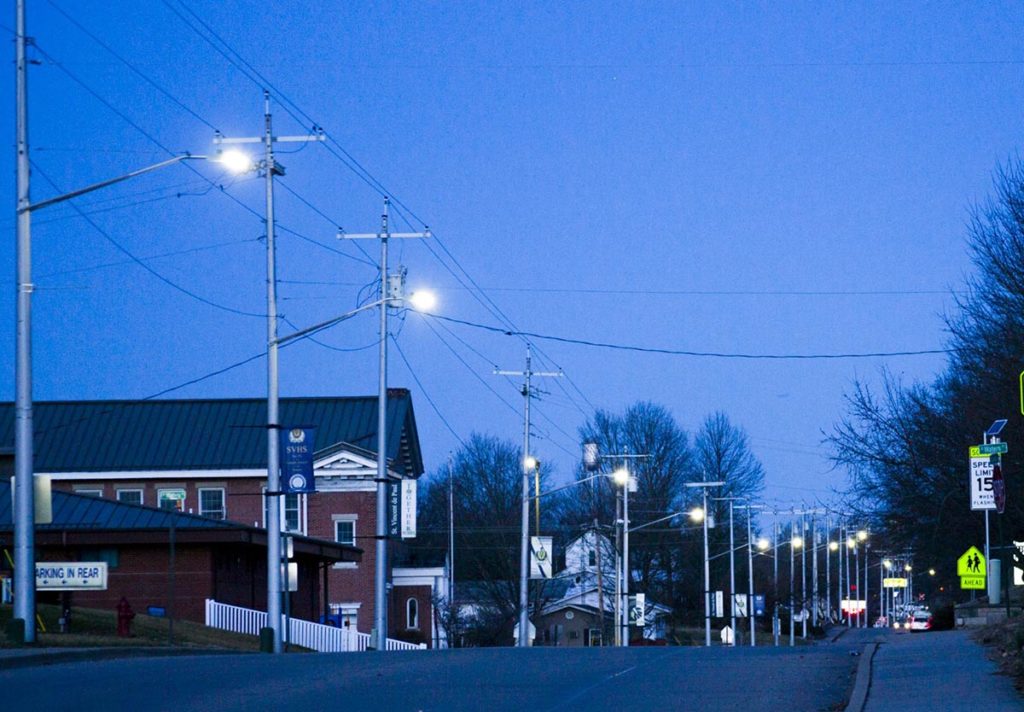
An Indiana generation and transmission cooperative has spent more than a decade working with its distribution co-op members to strengthen energy efficiency programs and enhance relationships with consumer-members and key accounts while reducing growth in demand. Indianapolis-based Wabash Valley Power Alliance is reaping energy savings and helping to improve co-op-served communities with investments and consulting services offered through its member co-ops.
“Since 2008, we’ve had over 300 million kilowatt-hours in energy savings and $66 million in avoided costs,” said Laura Matney, Wabash Valley Power’s marketing manager. “We’ve also passed on $32 million in incentives to co-op members.”
The program, available to the G&T’s 23 member co-ops in Illinois, Indiana and Missouri, was initially launched to provide residential rebates for heat pumps and Energy Star washers. It has been known as Power Moves since 2010.
“A very small set of energy efficiency rebates for residential co-op members has since grown to include commercial and industrial rebates, advice on energy efficiency, assistance in commercial new building design from a LEED-AP certified engineer and a resource for electric vehicle information,” said Matney. In recent years, offerings have included a co-op solar program, demand response projects and beneficial electrification initiatives.
Wabash has tapped the skillsets of its member co-ops to help select and refine offerings. Working groups of co-op energy advisers and other staff have opportunities to suggest and pursue initiatives, and a committee of co-op CEOs has final oversight over changes every year.
Over time, the program has yielded things like fresh approaches to high bill complaints and new tools for key account executives.
“Our members love the fact that it helps them build relationships with their members,” said Matney.
To help businesses with new construction projects, the program provides design assistance to identify incentives and lower overall energy costs.
“Our BNC [business new construction] engineer has sat with retail members and their contactor to review preliminary drawings to maximize savings,” said Matney. “One lighting contractor was able to rejigger the design on the spot to save the member purchase costs and get better lighting, along with a higher incentive and lower energy costs.”
And the program is paying off for institutional members, too, enabling them to hold the line on services often covered with tax dollars.
When the cities of Perryville and Ste. Genevieve, Missouri, were looking for ways to save money on street lighting, they turned to their distribution co-op, Citizens Electric Corp. The co-op used Power Moves rebates to help the municipalities replace older, less efficient lighting with LED fixtures, which provide better and more focused lighting, use less energy and require less maintenance.
“The dollars made sense,” said Steve Elsea, Citizen Electric’s manager of member services. “We were paying essentially half of what we would’ve paid for standard street lighting fixtures, and since our contracts with those co-op-served communities call for us to maintain them, our crews are spending less time on streetlight maintenance and their overall energy costs are significantly lower. The new LED fixtures are warranted for 10 years, and maintaining old high-pressure sodium, metal halide or mercury vapor fixtures was just not cost effective.”
Because Power Moves is member-driven, distribution co-ops access the rebates by quantifying kilowatt-hour savings. In the process, they inform and educate members about the benefits of upgrading or replacing outdated fixtures and equipment.
“We tell folks that because the rebates are not guaranteed from one year to the next, it might be best to consider certain upgrades while they are available,” said Elsea. “We’ve had a lot of schools, hospitals, commercial real estate operators, some very small offices and large manufacturers heed that advice. They’re installing high efficiency equipment, variable frequency drives and making lighting upgrades to keep from leaving money on the table.”
And the G&T benefits from decreased demand and the option of forgoing development of new generation, said Wabash Valley Power’s Matney.
“Power Moves gives our distribution co-op key account executives happy, proactive reasons to visit their C&I members,” Matney said. “It also helps the G&T avoid some power supply costs and that flows back to lower rates.”
Derrill Holly is a staff writer for NRECA.